Polmegawatta clean energy in private hands - the domestic new autonomous energy
Last year, I described my path in transforming free sunlight into electrical energy. Having tried a lot of equipment for autonomous power engineering, I stopped at the products of the Russian company “MicroART”. And this year, domestic developers have pleased with the release of a completely new device, which is the heart of any autonomous power system - the MAP DOMINATOR inverter. Declared a mass of new functions: increasing power by adding inverters, the organization of a three-phase network, built-in microcomputer. In the end, it was promised that the system allows to generate more than half a megawatt of energy, and this is already an application!
Using the action on the site, which tells about the possibility of upgrading the inverter with a small surcharge, I decided to use this opportunity and myself to evaluate the stated characteristics.
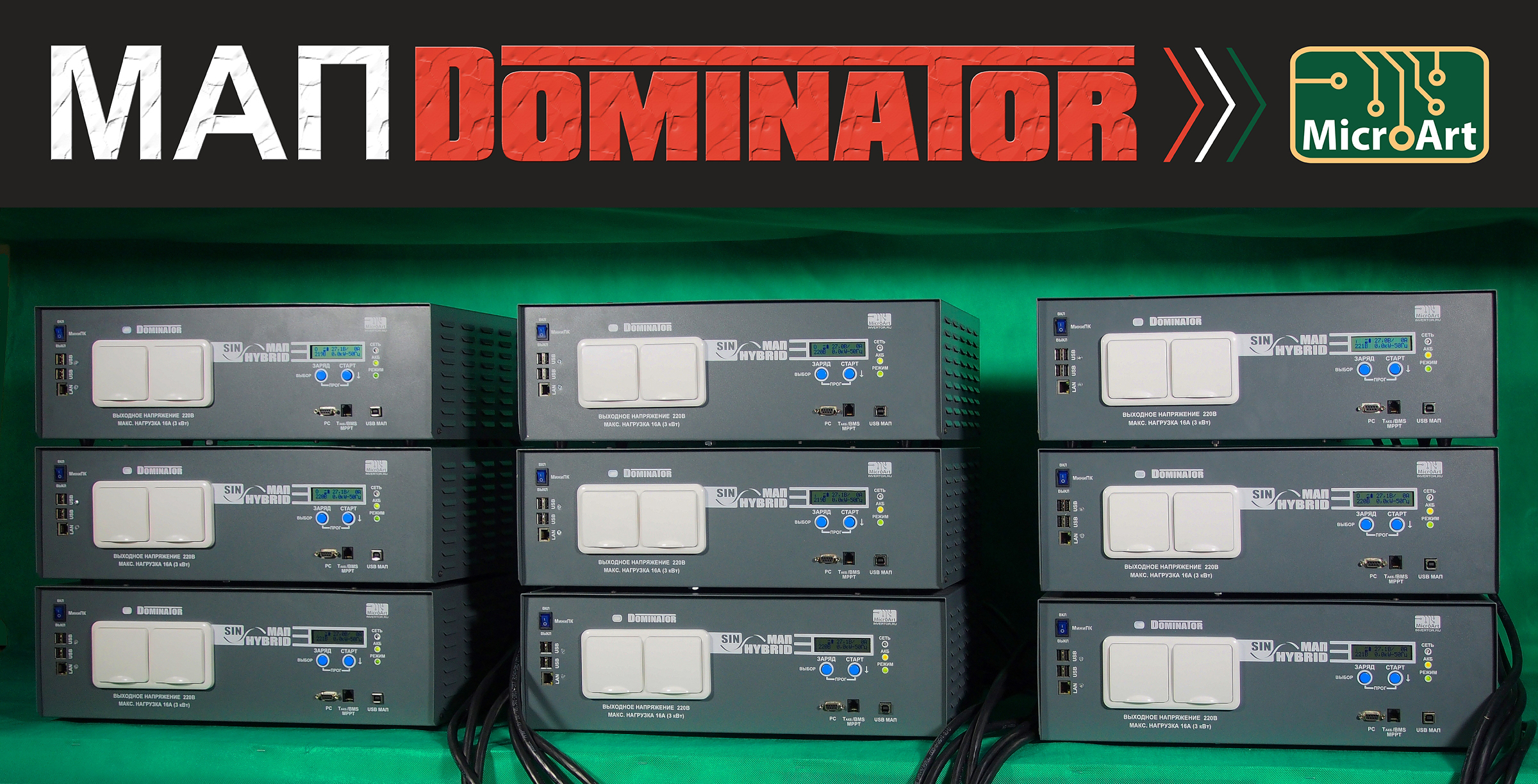
')
A little background: in the New Year holidays there was a fire in my village. The house was on fire, a short circuit occurred and, besides, there were three phases interlocked. I do not know how many appliances got burned on this night, but only I have all the electrical appliances intact thanks to the installed stabilizer and inverter. A very interesting stress graph was obtained during this period. Voltage jumped from 100 to 280 V. Since then, I trust this manufacturer even more.

And now go to the new inverter. Let's start with the fact that the declared capacity to increase capacity when connected in parallel. This means that if you bought an inverter, for example, at 6 kW, and a year later, a bath was added to the house, and there was not enough energy, you do not need to run after a new inverter with more power. Just buy one more such inverter and the power will double. I did not need to buy two inverters and I asked the lab to show how it would work. They did not refuse me and even gave me a shot. In the frame of the first heat gun with a capacity of 4.5 kW, the second - 6 kW. Step load on 1.5 kW. Further on the video it is clear how this works.
In the frame there were two inverters MAP 4.5 kW. The total load was 9 kW. I took one of the tested inverters. Naturally, it was not without an autopsy.

I started with weighing. The new inverter was 2.4 kg heavier. This is explained, most likely, by the choice of another transformer manufacturer, and a microcomputer and its power supply unit were added. That is, copper does not regret that it is good. And then there was an episode in my life when an electric motor made by the Chinese had aluminum in its winding painted with yellow paint.
The second stage was an external comparison. Changes touched the front and rear. From the front, USB ports and a new switch are immediately apparent. These are the interfaces of the built-in microcomputer Raspberry Pi - a device tested by time and millions of users. Indeed, why reinvent the wheel? And the solution itself has already been run in, but as a separate solution for previous versions of inverters, it was called the Malina PAC (Malina Software and Hardware Complex).

There is a noticeable change in the connection block from the back: there was a separate input for connecting the generator, there are communication ports for connecting additional inverters and controlled relays appeared, to which I will return later.

Now let's take a closer look at the microcomputer. One port immediately takes a flash drive with a database and software. The second port will be busy connecting the inverter itself. The question arises, why not make the switching inside the case? It's very simple: the port to which Malina connects is also used to update the firmware. To do this, you need to disable raspberries. This solution eliminates the simultaneous connection to the port of raspberry and computer. There are still a couple of free ports for connecting other inverters or solar controllers.
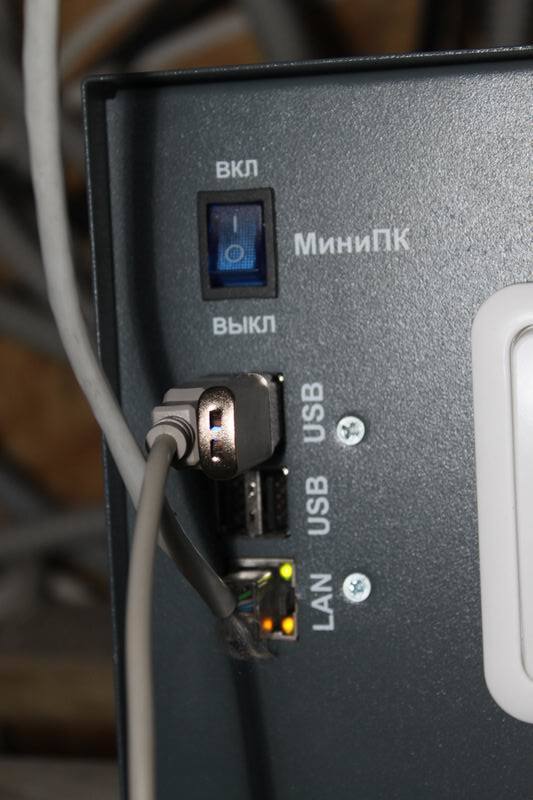
Turning to the network connection block, we see that in the first version of the inverter the wire of a separate generator connection has not yet been output, although the block is designed for this and the signature is appropriate. I suspect that this will be implemented soon.
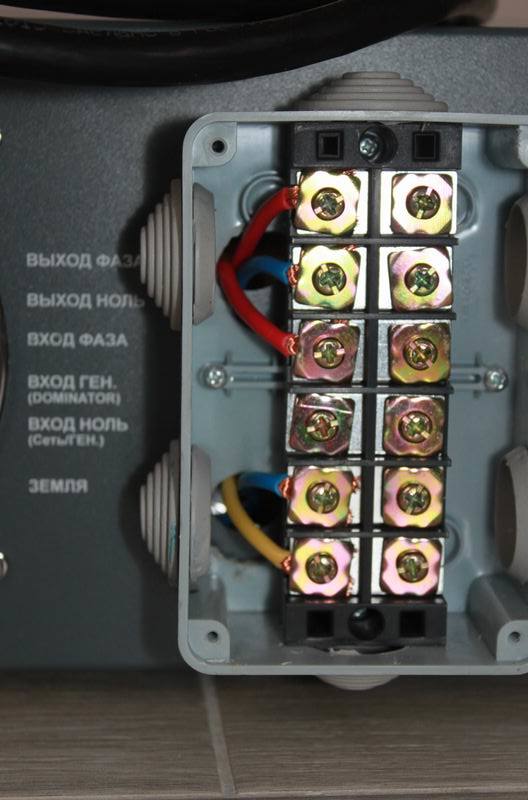
Now back to the relay. The interface for connecting other MAP Dominator and BMS inverters requires special cables, which, in principle, can be made independently. But with the purchase of several inverters, they are issued in the kit. Under the cover there are hidden contacts of two changeover relays, which are programmed directly from the inverter.

We open the case and inspect the insides. First of all, the general plan. It can be seen that almost a half of the volume is occupied by a toroidal transformer - such a solution has better efficiency and smaller sizes than transformers of another form factor.
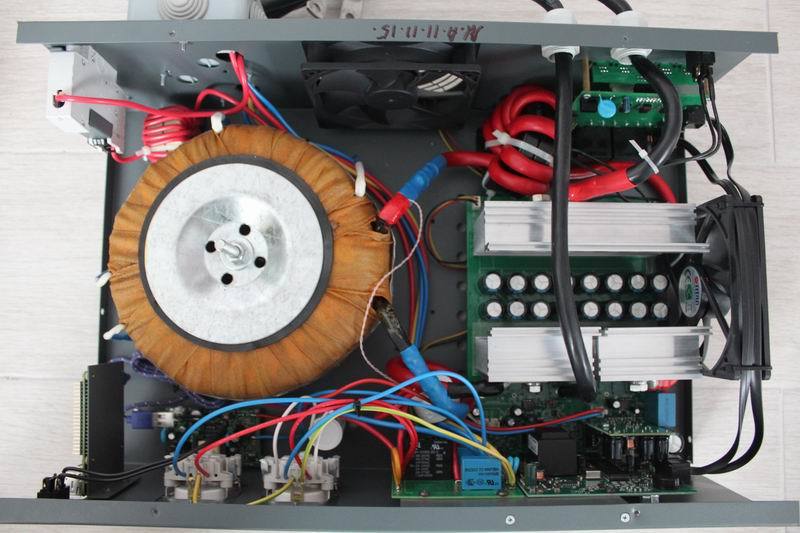
We examine the microcomputer and its power.

A decent power adapter ensures stable performance. I once had a sad experience with raspberries, which was powered by a regular USB adapter. Frequent glitches and malfunctions were solved only by replacing the power supply. In this case, the problem is excluded by default.

Go to the power unit. It is in this part that the pure sine is formed and all the logical processing takes place. The dimensions of the aluminum radiators installed in the MAP are pleasantly pleased, and the electrolytic capacitors are also blown by the fan, which reduces their heating and contributes to long service life.
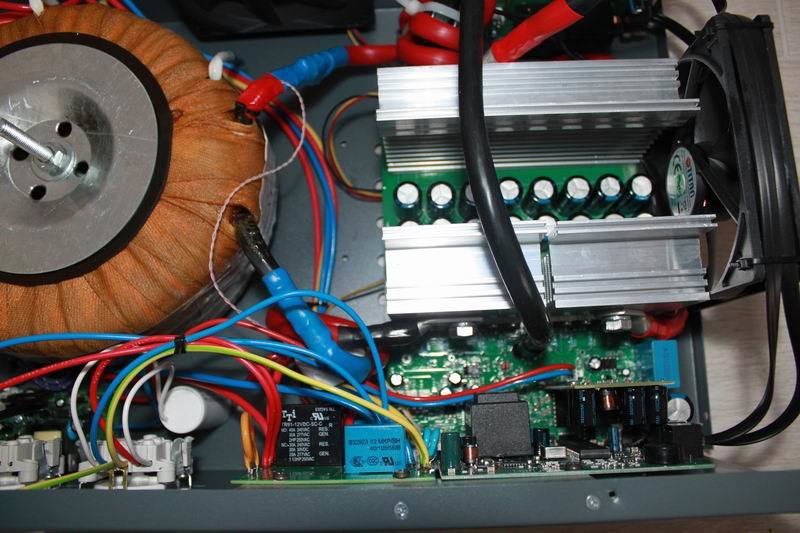
In the case of my inverter there are two coolers with a diameter of 120 mm. They work with variable speed, which depends on the load. With standard operation up to 1 kW, they are not even included - there is enough natural cooling of radiators. It's nice when the equipment is quiet. In more powerful models, 3 or even 4 coolers are used, which also work depending on the load and temperature.
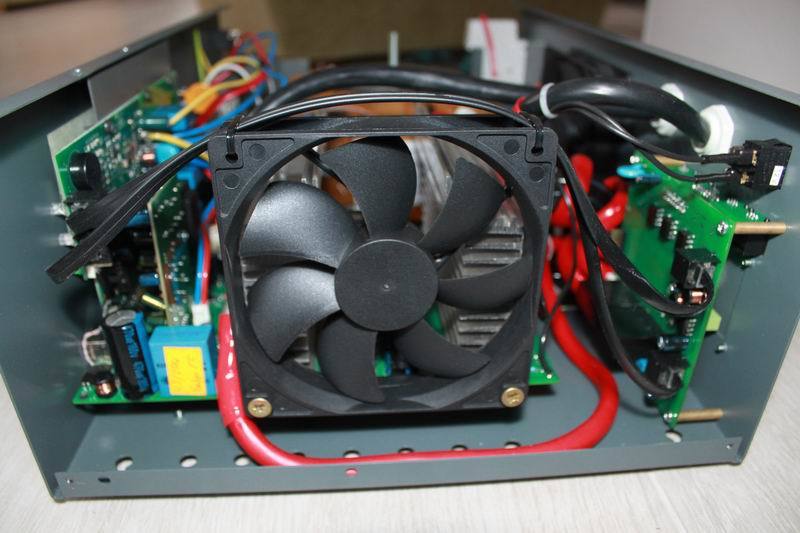
It is time to understand how the synchronization of two or more MAP Dominator inverters takes place. Total chain can contain up to 9 consecutively connected devices. In this case, the phase and zero outputs are simply connected to their own bus, and devices are connected according to the diagram below (you can go back to the video and see how this happens). In this scheme, it is clear that the first Dominator is the leader, and the subsequent followers. It is on it that the main network parameters are set. It is worth noting that if any slave Dominator fails, the system will continue to function normally, just the generated power will decrease.
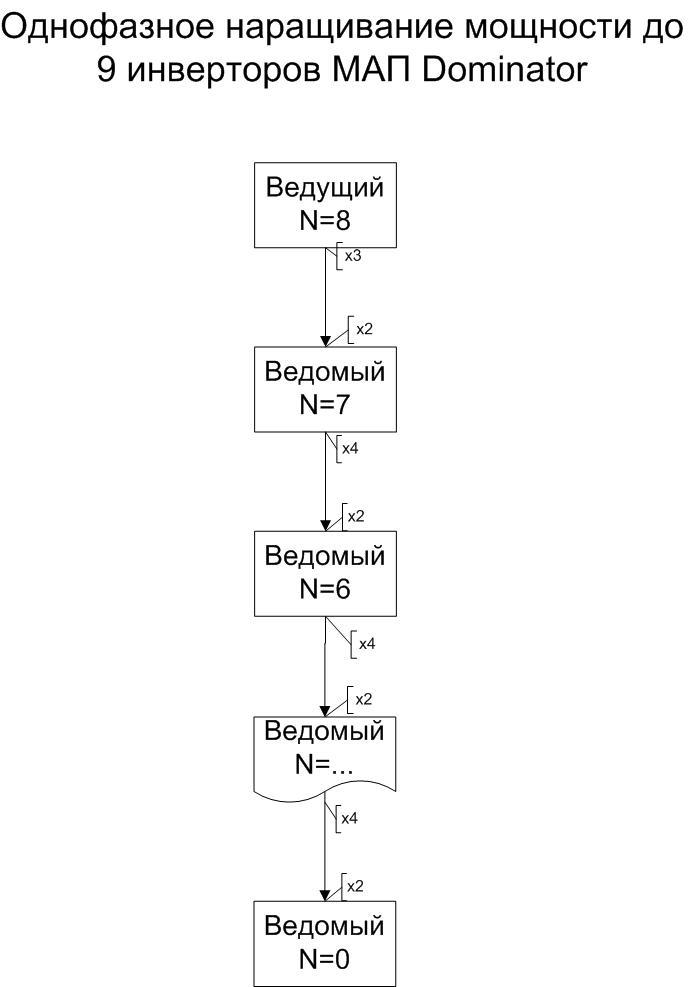
If it is required to have a three-phase network, the inverters can be synchronized taking into account the phase shift, which does not cancel the increase in power. A three-phase network diagram is shown below.

As for the relay control, there are a lot of scenarios how to activate them. Let me remind you that there are two relays, designed for 10A 250V. I will give the triggering parameters, and I’ll take screenshots into the spoiler: Start Benz / Diesel Generator, battery voltage, battery temperature, time, external network disappear, network broadcast, in charge mode.
So, the relay will allow dry contacts to switch to another phase or another input (for this, it is better to add a contactor to the circuit) or start a generator when the batteries are dead, turn on the alert throughout the house if there is no external network or think up any of your own. scenario.
It is noteworthy that the screen can display information about the temperature of transistors, transformers and batteries. For the latter, an external temperature sensor has been added to the MAP delivery set.

And this is what the information from my inverter's built-in microcomputer looks like right in the process of writing this material.

Conclusion
So, the novelty combines a lot of reliable and run-in solutions, and also demonstrated new ones. But where is the promised half a megawatt? According to the official website of MikroART company, the most powerful model is the MAP Dominator inverter of 20 kW (15 kW were allocated to the whole of my electrical network). In parallel, they can be installed up to 9 pieces - this is already 180 kW. In addition, the inverters can be combined into a three-phase network, so multiply 180 by 3 = 540 kW. So the statement is not groundless. It is difficult to imagine that a private house can consume such power - this is more likely for a whole metalworking workshop - there are appropriate capacities and three-phase motors. Well, given the fact that the Dominator is able to prioritize the use of solar energy as a power source, it becomes quite simple to save on the farm with such an inverter. Moreover, sunny days are approaching, which always delight owners of solar cells with a good production of clean energy.
Using the action on the site, which tells about the possibility of upgrading the inverter with a small surcharge, I decided to use this opportunity and myself to evaluate the stated characteristics.

')
A little background: in the New Year holidays there was a fire in my village. The house was on fire, a short circuit occurred and, besides, there were three phases interlocked. I do not know how many appliances got burned on this night, but only I have all the electrical appliances intact thanks to the installed stabilizer and inverter. A very interesting stress graph was obtained during this period. Voltage jumped from 100 to 280 V. Since then, I trust this manufacturer even more.
And now go to the new inverter. Let's start with the fact that the declared capacity to increase capacity when connected in parallel. This means that if you bought an inverter, for example, at 6 kW, and a year later, a bath was added to the house, and there was not enough energy, you do not need to run after a new inverter with more power. Just buy one more such inverter and the power will double. I did not need to buy two inverters and I asked the lab to show how it would work. They did not refuse me and even gave me a shot. In the frame of the first heat gun with a capacity of 4.5 kW, the second - 6 kW. Step load on 1.5 kW. Further on the video it is clear how this works.
In the frame there were two inverters MAP 4.5 kW. The total load was 9 kW. I took one of the tested inverters. Naturally, it was not without an autopsy.

I started with weighing. The new inverter was 2.4 kg heavier. This is explained, most likely, by the choice of another transformer manufacturer, and a microcomputer and its power supply unit were added. That is, copper does not regret that it is good. And then there was an episode in my life when an electric motor made by the Chinese had aluminum in its winding painted with yellow paint.
The second stage was an external comparison. Changes touched the front and rear. From the front, USB ports and a new switch are immediately apparent. These are the interfaces of the built-in microcomputer Raspberry Pi - a device tested by time and millions of users. Indeed, why reinvent the wheel? And the solution itself has already been run in, but as a separate solution for previous versions of inverters, it was called the Malina PAC (Malina Software and Hardware Complex).

There is a noticeable change in the connection block from the back: there was a separate input for connecting the generator, there are communication ports for connecting additional inverters and controlled relays appeared, to which I will return later.

Now let's take a closer look at the microcomputer. One port immediately takes a flash drive with a database and software. The second port will be busy connecting the inverter itself. The question arises, why not make the switching inside the case? It's very simple: the port to which Malina connects is also used to update the firmware. To do this, you need to disable raspberries. This solution eliminates the simultaneous connection to the port of raspberry and computer. There are still a couple of free ports for connecting other inverters or solar controllers.
Turning to the network connection block, we see that in the first version of the inverter the wire of a separate generator connection has not yet been output, although the block is designed for this and the signature is appropriate. I suspect that this will be implemented soon.
Now back to the relay. The interface for connecting other MAP Dominator and BMS inverters requires special cables, which, in principle, can be made independently. But with the purchase of several inverters, they are issued in the kit. Under the cover there are hidden contacts of two changeover relays, which are programmed directly from the inverter.
We open the case and inspect the insides. First of all, the general plan. It can be seen that almost a half of the volume is occupied by a toroidal transformer - such a solution has better efficiency and smaller sizes than transformers of another form factor.
We examine the microcomputer and its power.
A decent power adapter ensures stable performance. I once had a sad experience with raspberries, which was powered by a regular USB adapter. Frequent glitches and malfunctions were solved only by replacing the power supply. In this case, the problem is excluded by default.
Go to the power unit. It is in this part that the pure sine is formed and all the logical processing takes place. The dimensions of the aluminum radiators installed in the MAP are pleasantly pleased, and the electrolytic capacitors are also blown by the fan, which reduces their heating and contributes to long service life.
In the case of my inverter there are two coolers with a diameter of 120 mm. They work with variable speed, which depends on the load. With standard operation up to 1 kW, they are not even included - there is enough natural cooling of radiators. It's nice when the equipment is quiet. In more powerful models, 3 or even 4 coolers are used, which also work depending on the load and temperature.
It is time to understand how the synchronization of two or more MAP Dominator inverters takes place. Total chain can contain up to 9 consecutively connected devices. In this case, the phase and zero outputs are simply connected to their own bus, and devices are connected according to the diagram below (you can go back to the video and see how this happens). In this scheme, it is clear that the first Dominator is the leader, and the subsequent followers. It is on it that the main network parameters are set. It is worth noting that if any slave Dominator fails, the system will continue to function normally, just the generated power will decrease.

If it is required to have a three-phase network, the inverters can be synchronized taking into account the phase shift, which does not cancel the increase in power. A three-phase network diagram is shown below.

As for the relay control, there are a lot of scenarios how to activate them. Let me remind you that there are two relays, designed for 10A 250V. I will give the triggering parameters, and I’ll take screenshots into the spoiler: Start Benz / Diesel Generator, battery voltage, battery temperature, time, external network disappear, network broadcast, in charge mode.
Relay control menu

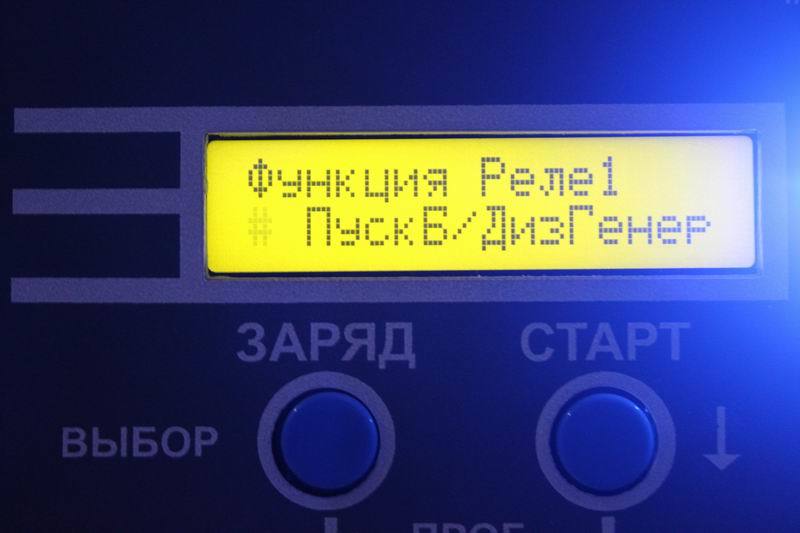



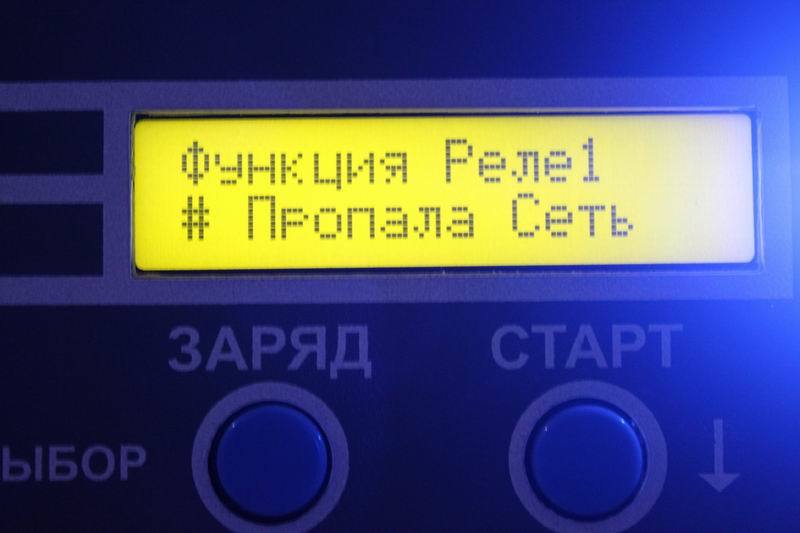
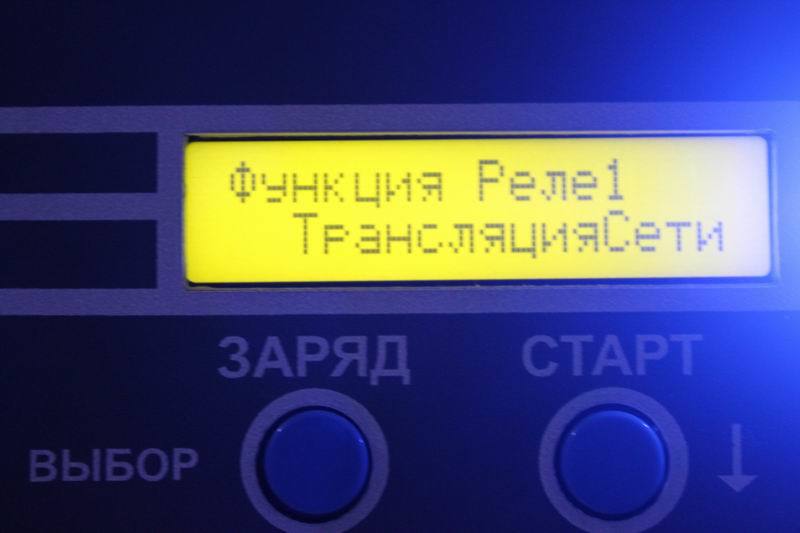

So, the relay will allow dry contacts to switch to another phase or another input (for this, it is better to add a contactor to the circuit) or start a generator when the batteries are dead, turn on the alert throughout the house if there is no external network or think up any of your own. scenario.
It is noteworthy that the screen can display information about the temperature of transistors, transformers and batteries. For the latter, an external temperature sensor has been added to the MAP delivery set.
And this is what the information from my inverter's built-in microcomputer looks like right in the process of writing this material.
Conclusion
So, the novelty combines a lot of reliable and run-in solutions, and also demonstrated new ones. But where is the promised half a megawatt? According to the official website of MikroART company, the most powerful model is the MAP Dominator inverter of 20 kW (15 kW were allocated to the whole of my electrical network). In parallel, they can be installed up to 9 pieces - this is already 180 kW. In addition, the inverters can be combined into a three-phase network, so multiply 180 by 3 = 540 kW. So the statement is not groundless. It is difficult to imagine that a private house can consume such power - this is more likely for a whole metalworking workshop - there are appropriate capacities and three-phase motors. Well, given the fact that the Dominator is able to prioritize the use of solar energy as a power source, it becomes quite simple to save on the farm with such an inverter. Moreover, sunny days are approaching, which always delight owners of solar cells with a good production of clean energy.
Source: https://habr.com/ru/post/390509/
All Articles